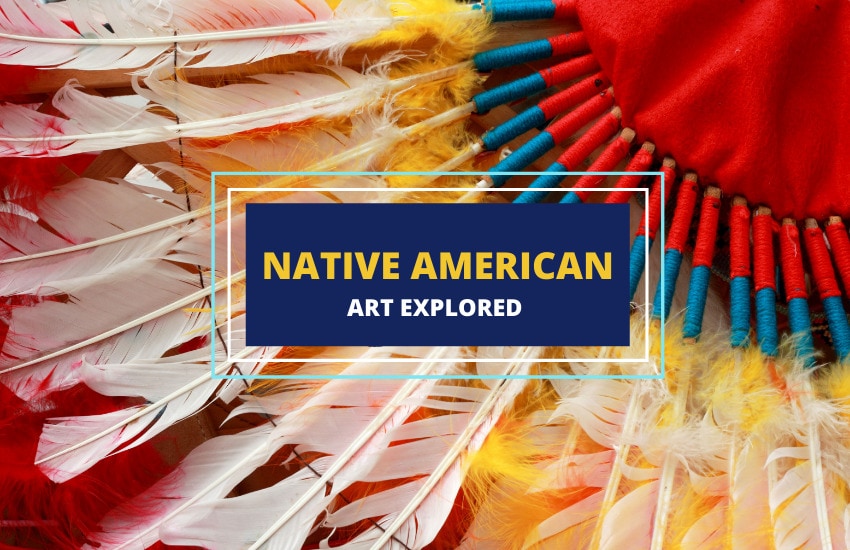
Different people imagine different things when they hear about Native American art. After all, there is no one type of Native American art. The Native American cultures of the pre-European colonization eras differed from one another as much as European and Asian cultures did. From that point of view, to speak of all the ancient Native American art styles as though they are one would be like talking about the Eurasian art of the Middle Ages – it’s much too broad
There are countless books written on the various types and styles of South, Central, and North American native art and culture. While it’s impossible to cover everything related to Native American art in a single article, we will cover the basic principles of Native American art, how it differs from European and Eastern art and the distinctive features of various Native American art styles.
How Did the Native Americans View Art?
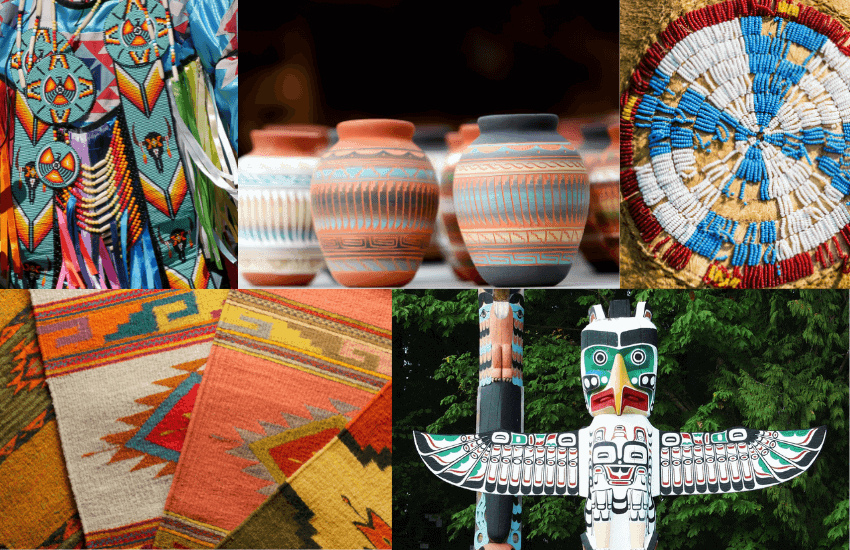
While there’s debate on how exactly the Native American people saw their art, it’s clear that they did not perceive art as people in Europe or Asia did. For one, “artist” doesn’t seem to have been an actual profession or vocation in most Native American cultures. Instead, drawing, sculpting, weaving, pottery, dancing, and singing were just things almost all people did, albeit with varying degrees of skill.
Granted, there was some division in the artistic and work tasks people took. In some cultures, like the Pueblo natives, the women wove baskets, and in others, like the earlier Navajo, the men did this task. These divisions simply went along gender lines and no single individual was known as an artist of that particular art form – they all just did it as a craft, some better than others.
The same applied to most other work and craft tasks we’d consider art. Dancing, for example, was something all took part in as a ritual or celebration. Some, we’d imagine were more or less enthusiastic about it, but there were no dedicated dancers as a profession.
The larger civilizations of Central and Southern America are somewhat of an exception to this rule as their societies were more noticeably divided into professions. These Native Americans had sculptors, for example, who specialized in their craft and whose impressive skills others often couldn’t simply mimic. Even in these large civilizations, however, it seems clear that art itself wasn’t viewed the same way as it was in Europe. Art had more of a symbolic significance rather than commercial value.
Religious and Militaristic Significance
Art in almost all Native American cultures has distinct religious, militaristic, or pragmatic purposes. Almost all objects of artistic expression were crafted for one of these three purposes:
- As a ritualistic object with religious significance.
- As ornamentation on a weapon of war.
- As ornamentation on a household object such as a basket or bowl.
However, the people of Native American cultures did not appear to engage in creating art for the sake of art or commerce. There are no sketches of landscapes, still-life paintings, or sculptures. Instead, all Native American art seems to have served a distinctly religious or practical purpose.
While Native Americans did produce portraits and sculptures of people, those are always of religious or military leaders – people the craftsmen were tasked with immortalizing for the centuries. However, portraits of regular people don’t appear to have been something that the Native Americans created.
Art or Craft?
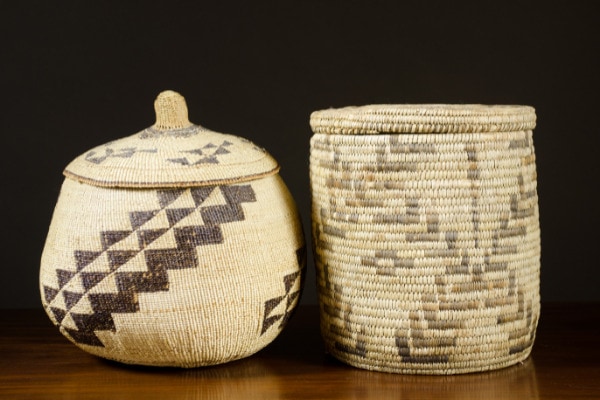
Why did Native Americans view art this way – as just a craft and not as something to be created for its own sake or for commercial purposes? A major part of it seems to have been the religious reverence of Nature and its Creator. Most Native Americans both realized and believed that they could never draw or sculpt Nature’s image as well as the Creator had already done. So, they didn’t even try.
Instead, Native American artists and craftsmen aimed to create semi-realistic and magical representations of the spiritual side of nature. They drew, carved, engraved, and sculpted exaggerated or deformed versions of what they saw, added spirits and magical touches, and tried to portray the unseen aspects of the world. Because they believed this unseen side of things exists everywhere, they did so on almost all everyday objects they used – their weapons, tools, clothes, homes, temples, and more.
Additionally, it’s not entirely accurate to say that Native Americans didn’t believe in art for its own sake. When they did, however, it was in a much more personal sense than most other people across the world would understand it.
Art as Personal Expression
In addition to using art and crafts for religious symbolism – something that South, Central, and North American natives all did – many, especially in the north, used art and crafts to create personal artistic objects. These could include jewelry or small talismans. They’d often be crafted to represent a dream the person had or a goal they aspired toward.
What’s key about such pieces of art, however, is that they were almost always made by the person themselves, and not as an item they’d just “buy”, particularly as this type of commercialization didn’t exist in their societies. At times, a person would ask a more skilled craftsman to make something for them, but the item would still hold deep significance for the owner.
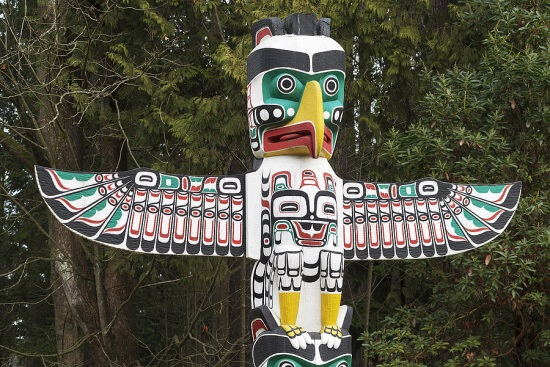
The idea of an artist making “art” and then selling or bartering it to others was not just foreign – it was outright taboo. For the Native Americans, every such personal artistic object belonged only to the one it was connected to. Every other major artistic object such as a totem pole or a temple was communal, and its religious symbolism applied to all.
There were also more mundane and relaxed types of art. Such profane drawings or humorous carved objects were more for personal than artistic expression.
Working With What You’ve Got
As with any other culture on the planet, the American natives were restricted to the materials and resources they had access to.
Tribes and peoples native to more woodland regions focused most of their artistic expression on wood carving. The people of the grassy plains were expert basket weavers. Those in clay-rich regions like the Pueblo natives were amazing pottery experts.
Virtually every Native American tribe and culture had mastered the artistic expression possible with the resources they had on hand. The Mayans are an amazing example of that. They didn’t have access to metals, but their stonework, ornamentation, and sculpting were sublime. From what we know, their music, dancing, and theater were also very special.
Art in the Post-Columbian Era
Of course, Native American art changed quite significantly during and after the invasion, wars, and eventual peace with the European settlers. Two-dimensional paintings became common as did gold, silver, and copper engraved jewelry. Photography too became quite popular among most Native American tribes in the 19thcentury.
Many Native American artists have become highly valued in a commercial sense in the last few centuries too. Navajo weaving and silversmithing, for example, are notorious for their craftsmanship and beauty.
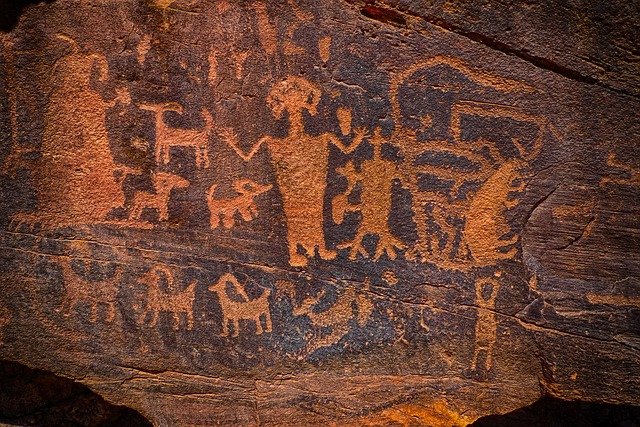
Such changes in Native American art don’t just coincide with the introduction of new technology, tools, and materials, but it was also marked by a cultural shift. What was missing before wasn’t that Native Americans didn’t know how to paint or sculpt – they clearly did as is made evident by their cave paintings, painted tipis, jackets, totem poles, transformation masks, canoes, and – in the case of Central and South American natives – entire temple complexes.
What changed, however, was a new view of art itself – not just as something conveying a religious or naturalistic symbolism and not just an ornament on a functional object, but art for the sake of creating commercial objects or materially valuable personal property.
In Conclusion
As you can see, there’s much more to Native American art than meets the eye. From the Mayas to the Kickapoo, and from the Incas to the Inuits, Native American art varies in form, style, meaning, purpose, materials, and virtually every other aspect. It’s also quite different from European, Asian, African, and even Australian aboriginal art in what Native American art is used for and what it represents. And through those differences, Native American art offers us a lot of insight into what the lives of America’s First People were and how they saw the world around them.








